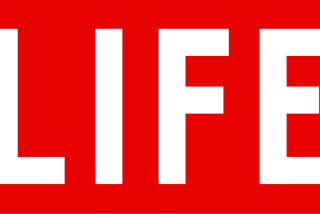Serial Founder Tries His Hand at Another Start-Up
- Share via
Louis Borders is best known for starting two companies: Borders Group Inc., which operates the hugely successful bookstore chain, and Webvan, the dot-com grocer that went belly up.
Now, Borders is getting back in the game -- but on a far smaller scale. Today, he is launching KeepMedia Inc., a Web site offering unlimited access to a database of magazine articles for a monthly rate of $4.95.
Borders wouldn’t say how much of his own money he has put into KeepMedia, but he said it was far less than the $850 million that Webvan spent before failing in 2001.
“This is a very modest start-up,” he said. “There’s no one doing what we’re doing now. That’s one of the benefits of operating in this post-bubble world.”
KeepMedia is starting off with fewer than 50 employees from its Redwood Shores, Calif., base. But Borders knows that great things can have humble beginnings.
Borders got his start in 1971 in Ann Arbor, Mich., selling counterculture books with his brother from a second-story store that he described as “the size of a good-sized bathroom.” Now Borders Group is the No. 2 bookstore chain in the country.
Borders got big by coming up with software systems that would creatively manage inventory. At each bookstore, stock lists were customized to adjust selections automatically based on reader preferences.
It’s a similar plan with KeepMedia. After a client signs up and does several searches, the site offers up other articles on similar topics -- not all of which are free.
Articles from current issues of magazines will be available for $1 each, or free to subscribers. Users also can sign up for magazine subscriptions on the spot, another reason that partners such as BusinessWeek, published by McGraw-Hill Co., see KeepMedia as an opportunity.
“We think this is a good way to broaden our audience. It’s a matter of going where the readers are,” said Peggy White, general manager of BusinessWeek Online. “This is an experiment. We hope it works.”
Absent from the venture is Time Inc., one of the country’s largest publishers of magazines, with a portfolio that includes Time, Sports Illustrated, People and Fortune. So is Conde Nast Publications, the magazine giant that puts out Vogue, Gourmet and the New Yorker.
Time Inc. is pursuing its own program for getting online users to pay. Beginning in April, it started closing off public access to many of its magazines’ Web sites, such as InStyle.com.
Subscribers to InStyle can still get in, as can newsstand buyers who enter a special code from the table of contents. Members of AOL, a corporate cousin under AOL Time Warner Inc., can surf all they want.
Ned Desmond, the head of Time Inc. Interactive, said the company was sticking with its own online payment program but had not ruled out joining forces with KeepMedia later.
Juliana Deeks, an analyst with Jupiter Research, said the company had a good chance of bringing in consumers with its cheap price.
But she cautioned that it was crucial to bring in more big-name magazines to the site.
Borders is mindful that others before him have tried and failed to set up electronic newsstands. Steven Brill, who founded American Lawyer magazine and Court TV, folded Contentville two years ago.
Time Warner also failed with a venture called Pathfinder.
Other sites already exist to serve professionals, such as LexisNexis, but that company charges a per-document fee of $3 or $250 for unlimited use for a week. Factiva, a joint venture between Dow Jones & Co. and Reuters Group, charges $69 a year plus $2.95 per article.
So far, KeepMedia has made arrangements with about 140 magazines, including Forbes, U.S. News & World Report, Esquire and six newspapers owned by San Jose-based Knight Ridder Inc.
More to Read
Inside the business of entertainment
The Wide Shot brings you news, analysis and insights on everything from streaming wars to production — and what it all means for the future.
You may occasionally receive promotional content from the Los Angeles Times.










